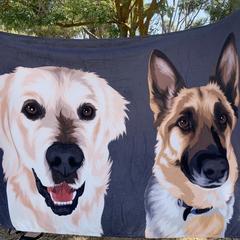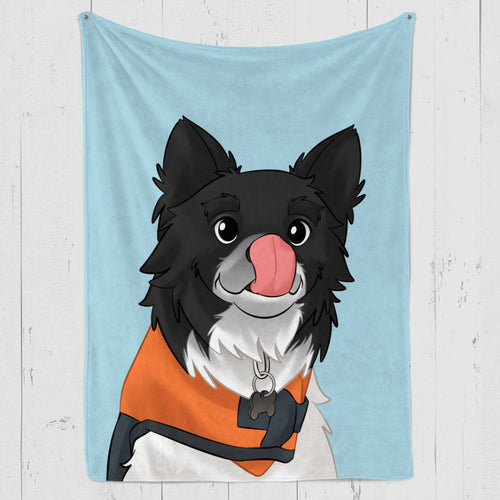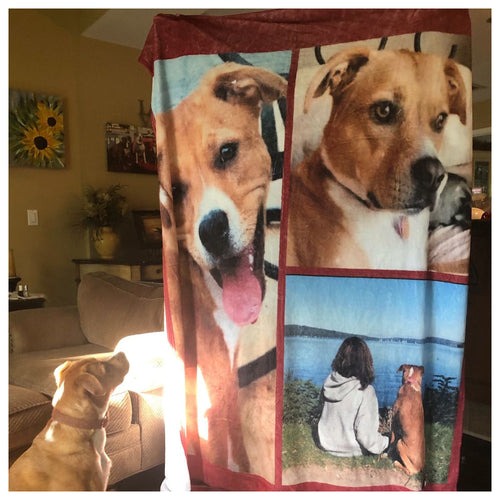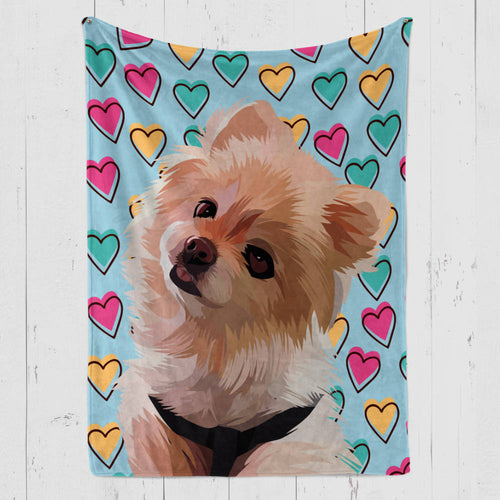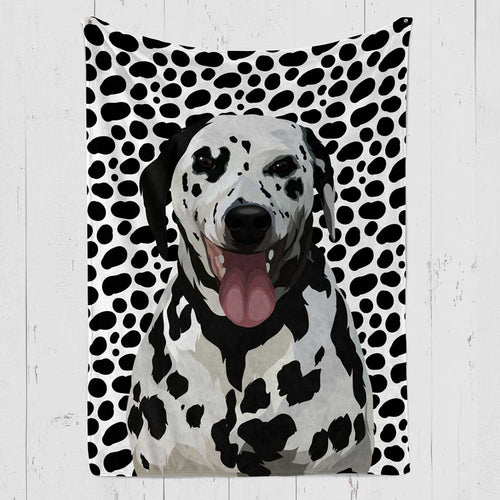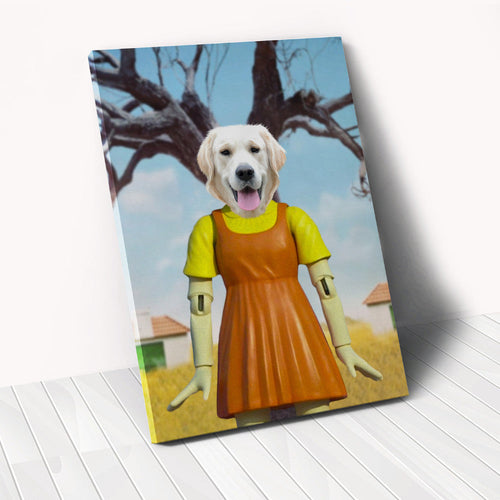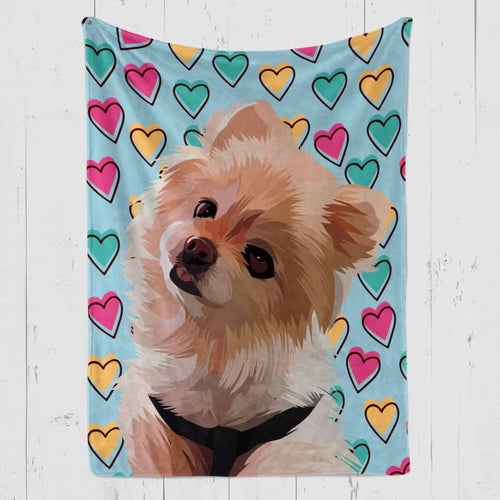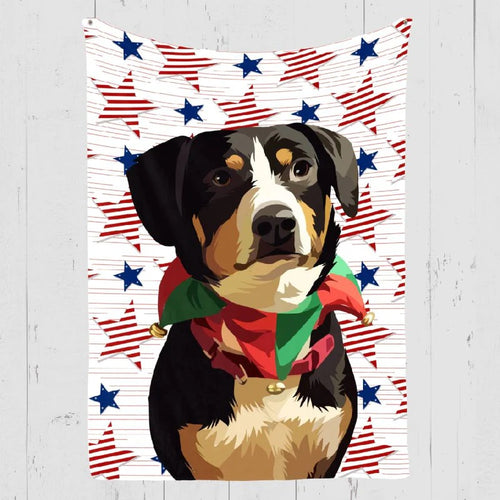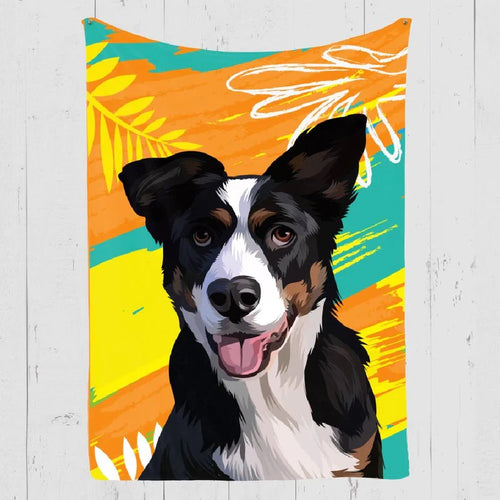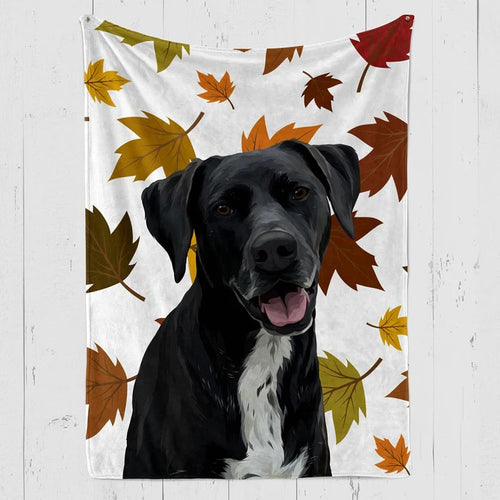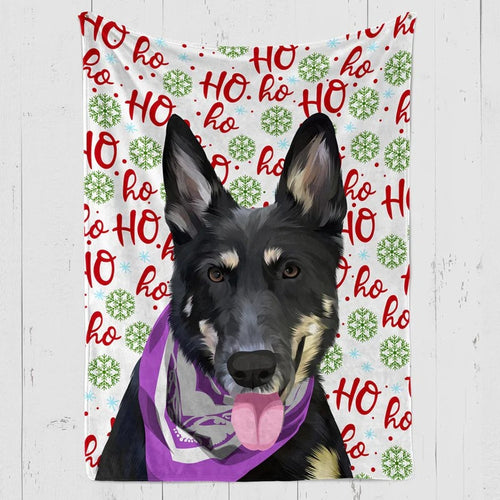
It's uncomfortable for everyone when you find tree sap on your dog. The sap can make boulders or pine needles attach to your pet's fur or paws, which can be very painful for them. A dog owner's life can be made miserable by sugary sap in the spring and early summer when it is at its most abundant. It's extremely difficult to get this incredibly sticky stuff off of fur.
Thankfully, you don't have to skip your regular dog walks. Most likely, you already have everything you need at home to remove sap from your dog's fur. Additionally, it doesn't have to be a duty you and your dog dread if you take quick action and are prepared with the right treats.
What Makes Sap a Potential Threat to Dogs?
When sap comes into contact with a dog's skin or fur, it can cause a number of issues.
1. Matting of the Fur
Sap can easily adhere to a dog's fur and cause matting and tangles since it is sticky. The affected hair may need to be clipped or removed since the dog may find it uncomfortable.
2. The Itchy Truth
As per medical professionals, sap that gets stuck beneath the dog’s skin has the ability to cause excessive inflammation, redness on skin and itching on almost all the body parts. If these symptoms remain untreated, it can be very uncomfortable for your dog and ultimately, skin infections can be triggered.
3. Beware of Ingestion
Dogs like to groom themselves, and if they lick or bite the sap from their fur, they could accidentally consume it. The type of sap can be poisonous and cause gastrointestinal distress, including vomiting and diarrhoea.
4. When the Body Rebels: Battle against Allergy
The sap or the plants it comes from may cause allergic reactions in some dogs. The symptoms of allergic responses that might result from coming into contact with sap include itchiness, hives, swelling, and in severe cases, breathing difficulties.
5. Navigating the Risks of Foreign Bodies
Sap can turn into a gooey, solid mass when it hardens. A dog's fur may get seriously sap-coated and become a foreign body hazard. In addition to restricting their movement and making them uncomfortable, if they attempt to scratch or bite at it, they could get damage.
The hazards related to sap can be reduced by giving dogs regular grooming, screening for sap or other chemicals in their coat after outings, and keeping dogs away from glue-producing trees.
Looking for Sap Removal Techniques for Your Dog's Fur?

There are a few common rules to go by when removing sap from your dog's fur.
1. Putting a collar on your dog
Your dog is prevented from tasting the sap by the cone or collar. If your dog ingests certain tree saps, such as pine, and Japanese Yew, they could become toxic. Make sure to safeguard your dog if you don't know what kind of sap it was exposed to.
To ensure that the collar stays in place, fit it around your dog's neck. In your neighbourhood pet store, you can purchase a collar. In the absence of a cone, keep the sap covered with a tiny t-shirt to prevent your dog from accessing it.
2. Use a blow dryer to soften and levy the hardened sap
Once you've softened the sap, working with it will be simpler. It's best to work when the fur is moist because attempting to remove tough sap from fur could cause your dog more pain. Hold the dryer 15 cm or so from your dog while using the low heat setting.
The sap will soften after being exposed to the dryer's heat for about 10-15 seconds. To prevent your dog from suffering from the heat, try to move the dryer's nozzle around. Stop using the blow dryer in case your dog stresses out when it hears it.
3. Massage sap-covered part with vegetable or cooking oil
Oils cause the sap to degrade quickly. Vegetable oils are acceptable to use because they are all-natural and won't hurt your dog if it licks them by accident. Use oil to cover the sap and work it into your dog's fur. Instead of using vegetable oil, you could instead opt for mineral oil, but you should not let your dog lick it because it might have a small laxative effect.
4. In case you don’t have vegetable oil, go for peanut butter
Oil in peanut butter is sufficient to degrade recently formed sap. In spite of the fact that you're applying yet more sticky substance to your dog's fur, it will suffice in an emergency. The entire sap-covered area should be smeared with peanut butter, which should then be gently massaged into the dog’s fur.
Instead of peanut butter, regular butter or mayonnaise will also work. Even while granular peanut butter might be effective, the peanut fragments might create more of an issue.
5. Pour vodka on the fresh sap
Fresh tree sap responds well to alcohol. Check that your dog can't lick the area you're cleaning if you use vodka because the alcohol may make it sick. Pour some alcohol onto the sap and use a soft cloth to rub it into your dog's fur. It is advised to avoid using rubbing alcohol because it is unsafe for your dog to consume or lick at.
6. Allow peanut butter, or vodka to soak in sufficiently
It takes some time (5-10 mins) for sap to break down completely. Keep an eye on your dog to make certain they aren't licking or scratching the sap. Your dog's fur will get much more convenient to deal with as the oils or alcohol continue to release the sap from it.
7. Comb out all the visible sap
To avoid any snags, go for a wide-toothed comb. In order to avoid hurting your dog, comb through their fur as gently as possible. Your comb will likely have a lot of residue; remove it by wiping it off after each stroke with a paper towel. Work continuously until no more sap is visible.
Stop immediately and try to free your fingers from the snag if your comb becomes stuck. Try rubbing additional oil into your dog's fur if there is still some sap stuck there.
8. Use a good-quality pet shampoo
Put your dog in a bathtub or take it outdoors to be hosed off. Wash your dog's fur with shampoo after wetting it. Rinse off the shampoo completely after using it to ensure that no residue is left.
9. Clip long hair as a solution
If your pup belongs to a breed with long hair, you can cut sap without risk. Only when the sap is not directly next to your dog's skin will clipping be effective. If your dog has long hair, like a husky, you can simply trim the sap-covered hairs off the ends with pet clippers. Allow a professional groomer or veterinarian to cut your short-haired dog's coat to avoid inadvertently injuring your pet.
10. Consult a vet for persistent sap removal
Any remaining sap can be safely removed by your veterinarian. Inform your veterinarian over the phone that your dog has consumed sap. Since certain types of sap can be poisonous, get your dog to the veterinary quickly to avoid any unfortunate incident. Keep an eye out for excessive vomiting, diarrhoea, and drooling.
If your dog ingests any sap from any plants—especially if you don't know which plants it was—let your veterinarian know right away because it might be poisonous. Take your dog to the veterinarian right away if it exhibits any of these symptoms. Unless your veterinarian instructs you to, you shouldn't try to have your dog throw up.
Freeing sap from fur
You'll need to use a hair dryer on the lowest setting to soften the sap if it has solidified. To determine an appropriate height where the air is warm but not hot, test the dryer's temperature on your palm first.
Olive oil, smooth peanut butter (free of xylitol) or mineral oil can all be used to release the sap. After applying the product to the troubled fur, massage it in for a couple of minutes. Since your pet may attempt to lick the oily material off their fur, it's crucial to only utilise items that are safe to consume.
To carefully and gradually remove the sap from your animal's fur, use a wide-toothed comb and your fingertips. You can use a damp cloth or a paper towel to wipe away some of the greasy product and leftovers as you go.
Just be careful not to cut too close to the skin. Apply an open to pets shampoo and warm water for a final cleaning. To completely remove the greasy product, you might need to bathe the region more than once.
Removing sap from Dog paws

Gently rubbing the area with a mixture of olive oil, mineral oil, or xylitol-free peanut butter, you can remove sap from paws. Utilising water and a shampoo safe for pets, remove the sap and greasy substance.
If the fur surrounding the paw pads has any tough patches, you can carefully cut them with a surgical clip blade or, if you don't feel comfortable doing it yourself, schedule a visit with a groomer.
It gets tougher to remove sap from their fur the longer it remains there. Consult a physician if your pet exhibits signs like nausea, weakness, vomiting or skin irritation.
Takeaway
When playing or exploring, dogs frequently get sap caught in their fur or paws. However, some sap varieties can be harmful to dogs if consumed or can cause eczema if left on their bodies and coat, so it's crucial to remove all of it.
Don't worry; while it may be difficult to get rid of, it is not impossible. All you need is the right equipment, perseverance, and, if required, the help of a dog groomer or veterinarian. Good fortune!
Frequently Asked Questions
Can I shampoo or use soap to get the sap out of my dog's fur?
Definitely, yes! To get rid of any remaining dirt in his coat, properly wash your dog with warm water, soap, and dog shampoo. If any sap remains, repeat the process; alternatively, cut any more sap with a second set of scissors.
If I want to remove the sap from my dog's fur with scissors, is it safe?
Use scissors to cut out any sap that won't budge if necessary. No doubt, cutting will leave a space in the fur, but try not to freak out. When the coat develops, it will be repaired. Grab a pair of trimming shears in its place to prevent a gap in the fur. However, there are several situations in which scissors are inappropriate. Because there is a great risk of skin infection and cutting if the sap is extremely close to or even attached to the skin, medical attention is advised. Keep in mind that inappropriate use of scissors might result in serious, deep wounds.
What happens if the sap is ingrained firmly in my dog's fur?
Act swiftly to get sap out of your dog's fur if it is badly embedded. Apply some petroleum jelly to the problematic region to start, then wait for the sap to soften. With a wide-toothed comb, carefully comb the fur, beginning at the edges and moving inward. Use scissors to cut the hair as necessary. Warm water and a gentle pet shampoo should be used to properly clean the area. Keep an eye out for any discomfort or irritation in your dog. Ask for expert assistance if necessary.
What happens if my dog feels anxious or uneasy when the sap is being removed?
If your dog starts to feel anxious or uneasy while the sap is being removed, put their welfare first. Take breaks to let them unwind and cool off. To establish a favourable relationship, use rewards and praise as positive reinforcement. Get another person involved to aid and distract your dog. Consult an animal handler or veterinarian for assistance if stress continues or becomes out of control. Their knowledge can offer direction and guarantee your dog's safety throughout the procedure.
Sources (Website Name And Links)
- https://ontariospca.ca/blog/removing-tree-sap-from-your-pet/
- https://www.akc.org/expert-advice/health/avoid-a-sticky-situation-how-to-get-sap-out-of-dog-fur/
- https://www.wikihow.pet/Get-Sap-Out-of-Dog-Fur
- https://www.rover.com/blog/how-to-get-sap-out-of-dog-fur/
- https://www.hepper.com/how-to-get-tree-sap-out-of-dog-hair/
Recommended Articles :
Latest Review on Woof Blankets
To have such a masterpiece by my side every day is a gift for me and my memories with Rex. Thank you WoofBlankets for such an opportunity to recreate his image on a blanket.Lara o’ Miguel US, California

COLLECTION WORTH EVERY PENNY
BEST SELLERS
-
Woofy Single Color Custom Pet Blanket
![Woofy Single Custom Pet Blanket – Woof Blanket]()
- -41%
BlanketsSHOP NOW- Regular price
- from $64.95
- Sale price
- from $64.95
- Regular price
-
$109.95 - Unit price
- per
Sold out -
Exclusive Christmas Custom Pet Blanket
![Exclusive Custom Pet Blanket]()
- -39%
BlanketsSHOP NOW- Regular price
- from $69.95
- Sale price
- from $69.95
- Regular price
-
$114.95 - Unit price
- per
Sold out -
Christmas Custom Pet Blanket
![Christmas Custom Pet Blanket - Custom Dog Blankets]()
- -40%
BlanketsSHOP NOW- Regular price
- from $69.95
- Sale price
- from $69.95
- Regular price
-
$115.95 - Unit price
- per
Sold out -
Watercolor Pet Portraits
![]() SHOP NOW
SHOP NOW- Regular price
- from $59.95
- Sale price
- from $59.95
- Regular price
-
- Unit price
- per
Sold out -
Woofy Christmas Custom Dog Blanket
![Woofy Christmas Custom Dog Blanket]()
- -39%
BlanketsSHOP NOW- Regular price
- from $69.95
- Sale price
- from $69.95
- Regular price
-
$114.95 - Unit price
- per
Sold out -
Modern Pet Owner Portrait
![]()
- -32%
CanvasSHOP NOW- Regular price
- from $84.95
- Sale price
- from $84.95
- Regular price
-
$124.95 - Unit price
- per
Sold out -
Woof Splash Custom Pet Blanket
![Woof Splash Custom Pet Blanket]()
- -39%
BlanketsSHOP NOW- Regular price
- from $69.95
- Sale price
- from $69.95
- Regular price
-
$114.95 - Unit price
- per
Sold out -
The Admiral - Custom Pet Portrait
![The Admiral - Custom Pet Portrait Online]()
- NEW
- -25%
CanvasSHOP NOW- Regular price
- from $59.95
- Sale price
- from $59.95
- Regular price
-
$79.95 - Unit price
- per
Sold out -
Wings of Loyalty - Custom Pet Portrait
![]()
- NEW
CanvasSHOP NOW- Regular price
- from $59.95
- Sale price
- from $59.95
- Regular price
-
- Unit price
- per
Sold out -
Pet Memorial Custom Photo Collage Blanket
![Personalized pet memorial quilt with photos]()
- -41%
BlanketsSHOP NOW- Regular price
- from $64.95
- Sale price
- from $64.95
- Regular price
-
$109.95 - Unit price
- per
Sold out -
Celestial Paws - Custom Pet Portrait
![]() CanvasSHOP NOW
CanvasSHOP NOW- Regular price
- from $59.95
- Sale price
- from $59.95
- Regular price
-
- Unit price
- per
Sold out -
The Loyal Soul - Custom Pet Portrait
![]()
- NEW
SHOP NOW- Regular price
- from $59.95
- Sale price
- from $59.95
- Regular price
-
- Unit price
- per
Sold out -
Cartoonized Pet Portraits (New)
![Cartoonized Pet Custom Portraits Online]()
- -36%
SHOP NOW- Regular price
- from $59.95
- Sale price
- from $59.95
- Regular price
-
$93.95 - Unit price
- per
Sold out -
The French Sailor - Custom Pet Portrait
![]()
- -25%
CanvasSHOP NOW- Regular price
- from $59.95
- Sale price
- from $59.95
- Regular price
-
$79.95 - Unit price
- per
Sold out -
The Policeman - Custom Pet Portrait
![]()
- NEW
- -25%
CanvasSHOP NOW- Regular price
- from $59.95
- Sale price
- from $59.95
- Regular price
-
$79.95 - Unit price
- per
Sold out -
The General - Custom Pet Portrait
![]()
- NEW
- -25%
CanvasSHOP NOW- Regular price
- from $59.95
- Sale price
- from $59.95
- Regular price
-
$79.95 - Unit price
- per
Sold out -
Woof Love Custom Pet Blanket
![Woof Love Custom Pet Blanket]()
- -39%
BlanketsSHOP NOW- Regular price
- from $69.95
- Sale price
- from $69.95
- Regular price
-
$114.95 - Unit price
- per
Sold out -
Summer Time Custom Pet Blanket
![Summer Time Custom Pet Blanket]()
- -39%
BlanketsSHOP NOW- Regular price
- from $69.95
- Sale price
- from $69.95
- Regular price
-
$114.95 - Unit price
- per
Sold out -
The Ambassador - Custom Pet Portrait
![The Ambassador - Custom Pet Portrait Online]()
- NEW
- -25%
CanvasSHOP NOW- Regular price
- from $59.95
- Sale price
- from $59.95
- Regular price
-
$79.95 - Unit price
- per
Sold out -
Fall In Love Custom Pet Blanket
![Fall In Love Custom Dog Blanket]()
- NEW
- -39%
BlanketsSHOP NOW- Regular price
- from $69.95
- Sale price
- from $69.95
- Regular price
-
$114.95 - Unit price
- per
Sold out -
The Classy Lady - Custom Pet Portrait
![The Classy Lady]()
- NEW
- -25%
CanvasSHOP NOW- Regular price
- from $59.95
- Sale price
- from $59.95
- Regular price
-
$79.95 - Unit price
- per
Sold out -
The Duke - Custom Pet Portrait
![The Duke - Custom Pet Portrait]()
- NEW
- -25%
CanvasSHOP NOW- Regular price
- from $59.95
- Sale price
- from $59.95
- Regular price
-
$79.95 - Unit price
- per
Sold out -
Dog In Suit- Custom Pet Portrait
![Dash Dog In Suit- Custom Pet Portrait Online]()
- NEW
- -25%
CanvasSHOP NOW- Regular price
- from $59.95
- Sale price
- from $59.95
- Regular price
-
$79.95 - Unit price
- per
Sold out -
The Princess - Custom Pet Portrait
![]()
- NEW
- -25%
CanvasSHOP NOW- Regular price
- from $59.95
- Sale price
- from $59.95
- Regular price
-
$79.95 - Unit price
- per
Sold out -
Modern Pet Portrait with One Mug
![Modern Pet Portrait with One Mug]()
- -25%
Print MaterialSHOP NOW- Regular price
- from $99.95
- Sale price
- from $99.95
- Regular price
-
$133.95 - Unit price
- per
Sold out -
The Aristocrat - Custom Pet Portrait
![The Aristocrat - Custom Pet Portrait At Best Price]()
- NEW
- -25%
CanvasSHOP NOW- Regular price
- from $59.95
- Sale price
- from $59.95
- Regular price
-
$79.95 - Unit price
- per
Sold out -
Single Color Custom Blanket with 1 Mug
![Single Color Custom Blanket with 1 Mug]() BlanketsSHOP NOW
BlanketsSHOP NOW- Regular price
- from $99.95
- Sale price
- from $99.95
- Regular price
-
- Unit price
- per
Sold out -
Single Color Custom Blanket with 2 Pillows
![Single Color Custom Pet Blanket with 2 Pillows]()
- -21%
BlanketsSHOP NOW- Regular price
- from $99.95
- Sale price
- from $99.95
- Regular price
-
$125.95 - Unit price
- per
Sold out -
The Dog in Suit Custom Pet Mug
![]()
- -20%
MugsSHOP NOW- Regular price
- $39.95
- Sale price
- $39.95
- Regular price
-
$49.95 - Unit price
- per
Sold out -
Angel Custom Pet Mug
![]()
- -20%
MugsSHOP NOW- Regular price
- $39.95
- Sale price
- $39.95
- Regular price
-
$49.95 - Unit price
- per
Sold out -
This Human Belongs To - Custom Pet Mug
![]()
- NEW
- -20%
MugsSHOP NOW- Regular price
- $39.95
- Sale price
- $39.95
- Regular price
-
$49.95 - Unit price
- per
Sold out -
It's Not Dog Hair Custom Pet Mug
![]()
- NEW
- -20%
MugsSHOP NOW- Regular price
- $39.95
- Sale price
- $39.95
- Regular price
-
$49.95 - Unit price
- per
Sold out -
My Dog Is My Valentine Custom Pet Mug
![]()
- NEW
- -20%
MugsSHOP NOW- Regular price
- $39.95
- Sale price
- $39.95
- Regular price
-
$49.95 - Unit price
- per
Sold out -
3 Photos With Message Custom Pet Mug
![]()
- NEW
- -20%
MugsSHOP NOW- Regular price
- $39.95
- Sale price
- $39.95
- Regular price
-
$49.95 - Unit price
- per
Sold out -
My Valentine Has Four Legs- Personalized Mugs
![]()
- NEW
- -20%
MugsSHOP NOW- Regular price
- $39.95
- Sale price
- $39.95
- Regular price
-
$49.95 - Unit price
- per
Sold out -
Dog Mamma Custom Pet Coffee Mug
![]()
- -20%
MugsSHOP NOW- Regular price
- $39.95
- Sale price
- $39.95
- Regular price
-
$49.95 - Unit price
- per
Sold out -
Uncle Sam - Custom Pet Portrait
![]()
- NEW
- -25%
CanvasSHOP NOW- Regular price
- from $59.95
- Sale price
- from $59.95
- Regular price
-
$79.95 - Unit price
- per
Sold out -
The Revolutionary Emperor - Custom Pet Portrait
![]()
- NEW
- -25%
CanvasSHOP NOW- Regular price
- from $59.95
- Sale price
- from $59.95
- Regular price
-
$79.95 - Unit price
- per
Sold out -
The Princess Paws - Custom Pet Portrait
![]()
- -25%
CanvasSHOP NOW- Regular price
- from $59.95
- Sale price
- from $59.95
- Regular price
-
$79.95 - Unit price
- per
Sold out -
The Dark Crusader Knight - Custom Pet Portrait
![]()
- -25%
CanvasSHOP NOW- Regular price
- from $59.95
- Sale price
- from $59.95
- Regular price
-
$79.95 - Unit price
- per
Sold out

